Cellular Frequencies for Nomadic Travels
Every wireless broadcast (everything from FM radio to TV to cellular to satellite) is sent over a channel with its own unique signature: their frequencies. This includes data that is broadcast over cellular carriers that many RVers and boaters depend on for keeping connected.
The frequency of a radio wave is literally a measure of how many wave peaks there are per second – for example, a frequency of 700 MHz means 700 million wave peaks per second are passing by.
Data is then encoded on these waves by subtle adjustments to their shape.
A "channel" covers a range of frequencies - and the wider the range of frequencies covered by a given channel, the faster data can be sent on that channel over the air.
This channel width literally defines the "bandwidth" of the channel.
A "band" is made up of one or more similar channels, grouped together, and labeled for convenience.
A cellular band may be exclusive to a single carrier, or more commonly it might be subdivided into "blocks" each controlled by different carriers.
It sounds complicated, but it really is not.
An Analogy
Let's imagine we have a long road with several marinas and campgrounds along it.
We'll call it The Nomad Mile.
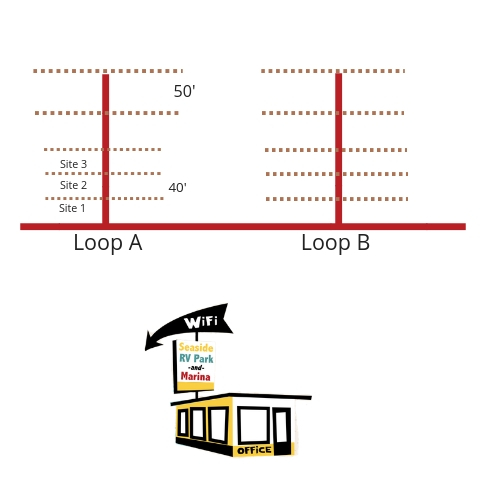 Radio Spectrum = Road: The real estate along the road is the radio spectrum that is divided up between different properties.
Radio Spectrum = Road: The real estate along the road is the radio spectrum that is divided up between different properties.- Bands = Marinas & Campgrounds: Each campground and marina along our road is its own property with its own boundaries - each property being like a frequency band.
- Blocks = Loops & Docks: Each campground and marina is then further organized into camping loops and docks. Each individual loop or dock is a block of spectrum.
- Channels = Campsites & Slips: Within each camp loop or dock, you have individual sites and slips. Each one of those is like a channel.
- Frequency = Site Address: If each site within a loop or dock had a unique specific address, that would be akin to its frequency.
- Bandwidth = Site & Slip Dimensions: Each site has its own dimensions of how large of an RV or boat they can fit - such as 30', 40', 50'. That size is like the bandwidth - how much capacity each channel (or site) has.
It really is that simple.
Real-World Example
Verizon’s original LTE network is deployed on LTE Band 13.
This band is not further split into blocks, and is exclusive to Verizon across the United States.
There are two channels that makeup Band 13 - a download channel broadcast from the cell tower on 746 MHz to 756 MHz, and an upload channel broadcast back using 777 MHz to 787 MHz.
Each channel thus has 10 MHz of bandwidth - limiting Verizon's potential peak speeds compared to carriers with wider 20 MHz channels, a trade-off against the great range that this band offers.
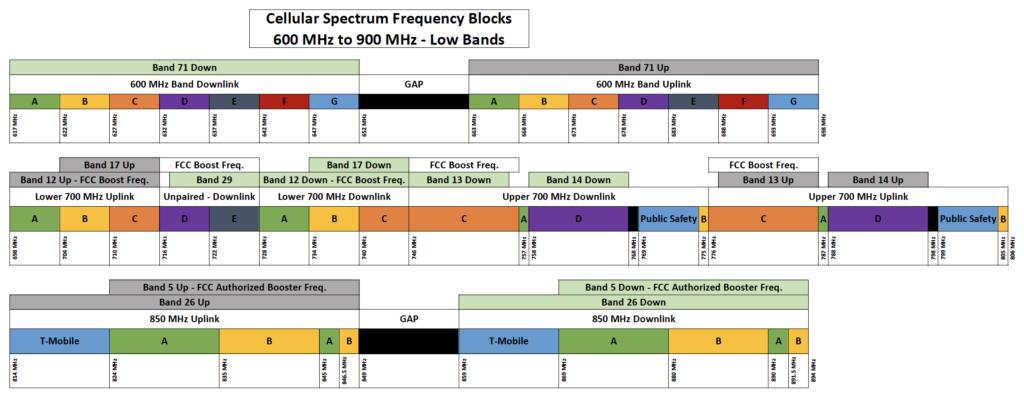
Carpool Lanes in The Sky
It helps to think of cellular spectrum like lanes on a highway.
The more lanes a carrier can offer, the more simultaneous users can be supported, and the faster each user can go.
Older devices without support for the latest 4G/LTE and 5G network bands are limited to the most congested lanes on the road, while newer devices can often zip past in the carpool lane leaving older devices stuck in traffic.
This is one of the prime reasons why it is important to keep your connectivity arsenal up to date.
But what does all this mean in practice?
Do frequencies impact cellular range and speed?
Are some bands better than others?
How are things changing as 5G comes on the scene?
Read on for the details...
If you're a member, please log in above to see your exclusive content.
Don't need a membership? Other ways you can support our work here:
-
As seen in our videos!
-
Get a FREE Month of Starlink!
And our team will get one too!
-
Get a FREE Month of T-Mobile Unlimited Data
Join the Calyx Institute, and get a bonus month - and we do too!
-
Save $20 on Visible
Verizon's prepaid phone plan, we also get a $20 credit.
-
Leave a Tip!
Send our team some beer money!!
-
Share About Us!
Link to our content, tell others about MIRC. It's Free!
It is with huge gratitude to our members for making the free unbiased educational content on our site possible. We're not sponsored, you'll find no 3rd party ads and we don't sell gear or data plans.
Our members get exclusive access to our in-depth content, classrooms, vendor discounts (that can save you more than membership!), alerts, insider info and interactive guidance. They can even book private advising sessions.
If mobile internet is an important part of your lifestyle, consider helping make MIRC possible by joining or supporting our mission.
Member Exclusive Content Below
Member Exclusive Content In This Guide
Has this guide been helpful so far?
Well.. there's a lot more below available to our members. As well as dozens of other guides like this, videos, classrooms, forums, webinars and more. All specifically created for helping keep RVers, cruisers and nomads online.
Consider Becoming a Member
If mobile internet is an important part of your lifestyle, a membership can help keep you connected with these exclusive benefits:
- in-depth exclusive content
- interactive guidance
- vendor discounts
- alerts & insider tips
- classroom
- community
Free Content Like This Made Possible By Our Members!
We are community funded via our premium membership program - allowing us to focus on creating unbiased quality, in-depth, constantly updated content. We don't accept 3rd party advertising, we're not sponsored and we don't sell 'stuff'.
Already a member?
Log in to continue with this guide.
Check out the Topics Covered in the Member Section:
Range & Real Estate
We explain how low and high-frequency bands have differing ranges, and how the carriers divide up their frequency real estate.
Cellular Frequency Bands
Understanding the frequency bands your carrier utilizes is key in selecting the right cellular gear.
Frequency Asked Questions
Ok, we couldn't resist the pun. In this section, we field some frequently asked questions about cellular frequencies.
Conclusion: Know Which Frequencies Your Carrier Uses
Understanding cellular frequencies and how your devices utilize them can be helpful when deciding what equipment to buy.
In general, lower frequencies mean more range and higher frequencies mean more bandwidth/speed.
A savvy shopper wanting access to a carrier's entire network should make sure any devices purchased support all of the current and future frequencies that the carrier utilizes.
If not, you could be missing out on coverage in some locations and may experience slower network speeds in others.
To dive deeper into what bands the top carriers are using, see our guide:
Understanding Cellular Modem Specifications
Additional Reading
Related Guides
Explore the Resource Center
Have Questions?
Join our 'Library Desk':
Internet for RVers & Cruisers Facebook Group
We cross post news articles and guides, and can help point you in the right direction to our content here on the resource center.
It is with gratitude to our premium members that we're able to offer our free content - and for that, they also have access to our member Q&A areas for more in-depth guidance.
Become a Member
 The MIA is our premium membership - designed for those who consider mobile internet an important part of their lifestyle.
The MIA is our premium membership - designed for those who consider mobile internet an important part of their lifestyle.
In thanks for making content like this possible, we offer a bunch of additional perks. From interactive guidance, in-depth member exclusive content, discounts, alerts, classroom and ability to book private advising sessions.
Stay In the Know
We're constantly tracking the industry and analyzing new developments for mobile travelers. If you'd like to receive updates, we offer several ways:
- Subscribe to our free monthly newsletter
- Subscribe to our News Stories RSS Feed
- Subscribe to our YouTube Channel
- Follow our Facebook Page
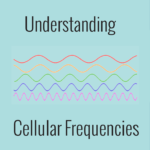


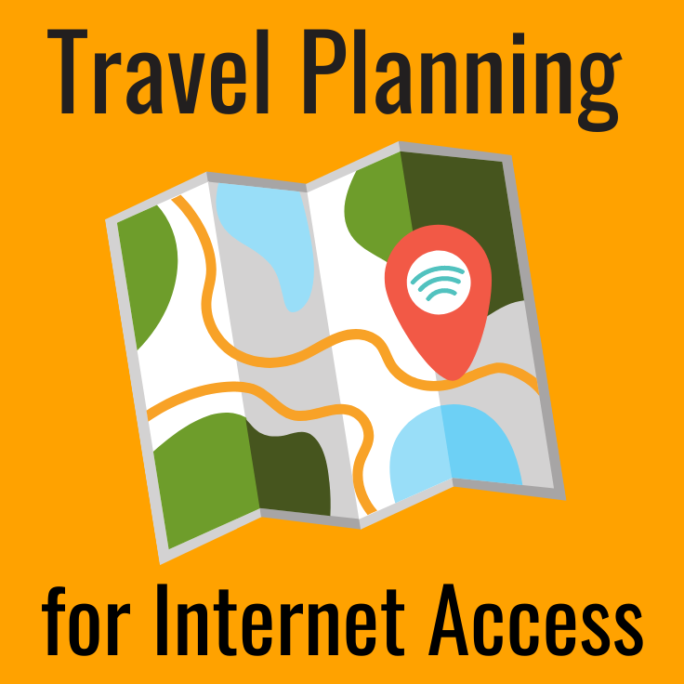
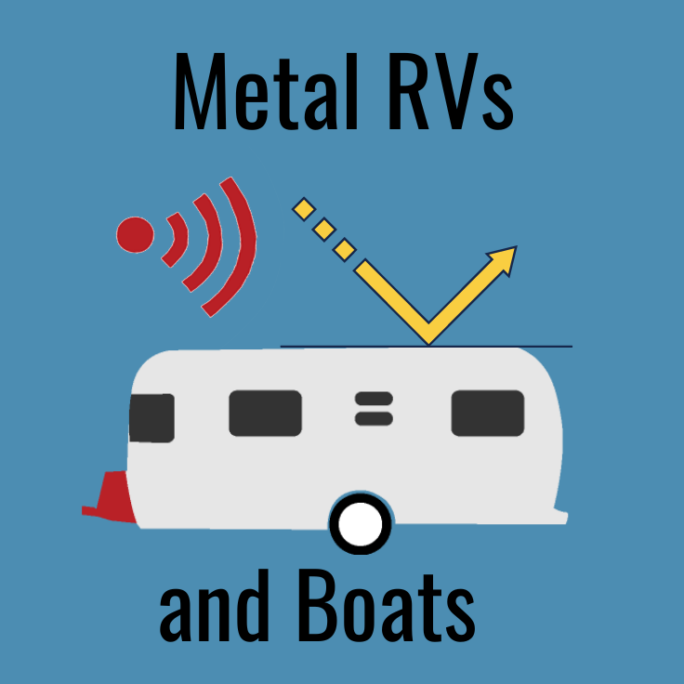






 Mobile Internet Resource Center (dba Two Steps Beyond LLC) is founded by Chris & Cherie of
Mobile Internet Resource Center (dba Two Steps Beyond LLC) is founded by Chris & Cherie of